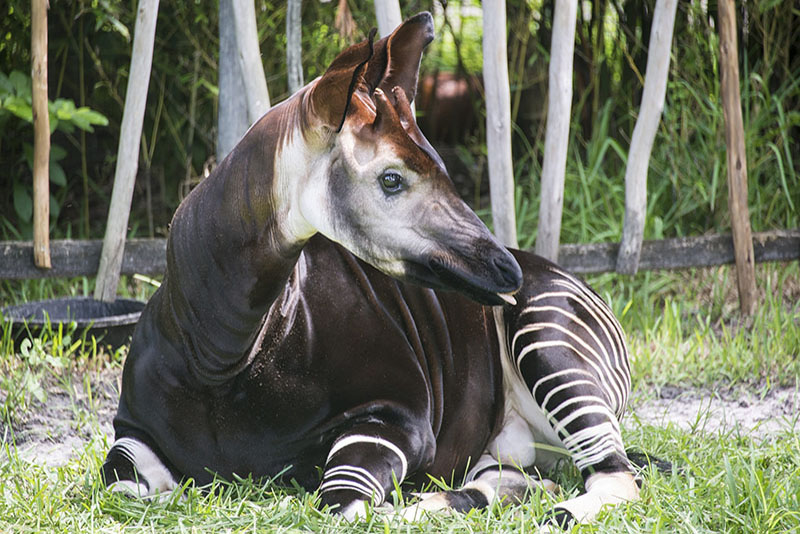It is difficult to study Okapis in the wild due to their elusive nature and the civil unrest occurring in the Democratic Republic of Congo. Therefore, much of what we know comes from populations within managed care. Okapis are largely diurnal and essentially solitary, coming together only to breed.
Each Okapi has a home range, however, they’re not territorial and home ranges often overlap. They forage along fixed, well-trodden paths through the forest. They have several methods of communicating their territory, including scent glands on each foot that leave behind a tar-like substance that signals their passage, as well as urine marking. Okapis also use vocal communication though much of it occurs at low frequencies that humans can’t hear.
Fun Facts:
- Okapi calves spend their first two months of life hiding in a nest and during this time they don’t poop
- Okapis have a scent gland on their foot that leaves behind a tar-like substance
Conservation Threats:
Endangered








![tampa-640x300-54[29]-noarrow](jpg/tampa-640x300-5429-noarrow.jpg)


